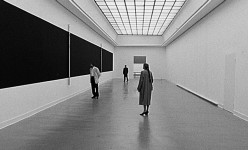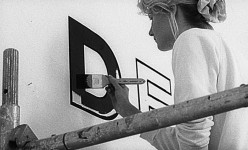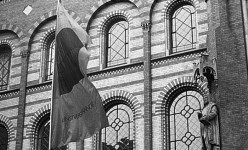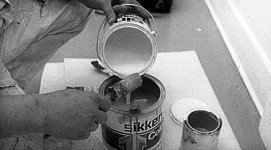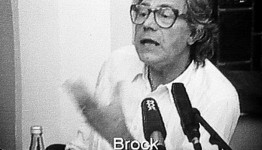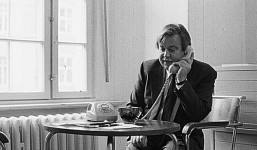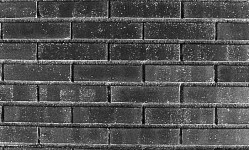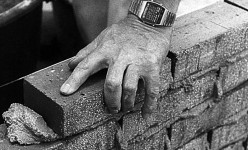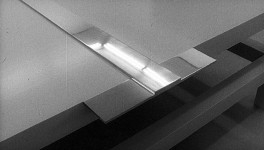Measure Color Light
Facts
Art Documentary, 41 min, 1992Directed by Jan Schmidt-Garre
The aesthetic theories of artist Gerhard Merz as illustrated by a single exhibiton – from the initial discussion of the concept through the inevitable changes to the opening at the museum.
Cinematography: Wedigo von Schultzendorff
Sound recording: Ueli Christen
Associate producer: Nicole Houwer
Texts
Gerhard Merz: Quotes
People haven’t realized what a radical departure from earlier art has taken place in this century. They have continually tried to make the link from modern art to old art. That is the false path of abstract art, the Kandinsky way: If you look long enough, then some canon will come to mind, or a flying horse or some sort of tree stump, fern or the like. This Rohrschach syndrome appears when it is not made absolutely clear that truly abstract art contains absolutely no depictive elements but is a completely radical structure that exists parallel to nature. People will probably always stand in front of these paintings, musing, deep in meditation, and then suddenly the completely unintended images of modern paintings will appear. In reality, something completely different is intended.
The misunderstandings arose after 1945, when the artist was considered as a "seismograph of the soul". You can see that, e.g., very clearly in the Neo Expressionism, where every artist thought that he had given expression to the innermost parts of his soul – but when he compared his works with other artworks that were created throughout the world, then he had to recognize that all of them looked very similar. When you paint intuitively, then you actually don’t paint your innermost soul, but you fall subject to what your elbow allows you to do. You will see, if you analyze these paintings in large numbers, that a similar pricipal of motion is always present, crosses and circles. When you let yourself go and don't construct, then you end up depicting the laws of motion of your elbow.
There are only three things in the fine arts for me: measure, color and light. Those are the naked weapons of art, nothing else is relevant. Art as a grammar within a set horizon. Light gives the magic, the transformation of art.
